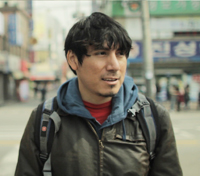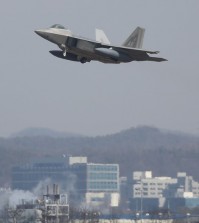- California Assembly OKs highest minimum wage in nation
- S. Korea unveils first graphic cigarette warnings
- US joins with South Korea, Japan in bid to deter North Korea
- LPGA golfer Chun In-gee finally back in action
- S. Korea won’t be top seed in final World Cup qualification round
- US men’s soccer misses 2nd straight Olympics
- US back on track in qualifying with 4-0 win over Guatemala
- High-intensity workout injuries spawn cottage industry
- CDC expands range of Zika mosquitoes into parts of Northeast
- Who knew? ‘The Walking Dead’ is helping families connect
Filmmaker captures Seoul in stunning time-lapse video
By Ko Dong-hwan
As any visitor can attest, Seoul is a place of constant movement. Cars and people pulse through the streets at a pace so rapid, it is simply known as “ppali-ppali” (quickly-quickly).
Take a step back, however, and all that motion can be stunning.
A new time-lapse project, completed over three years by Noe Alonzo, an American, provides a breathtaking view of the city and all the action that takes place within it.
Time-lapse photography requires capturing film frames at a lower rate than the one that will eventually be used to play the sequence back. Events that could take days or years can be sped up, and appear to occur over a few seconds.
Noe’s “Seoulites” is a three-and-a-half minute tour of the city. Because it is shot in time-lapse, viewers see all the action that occurs over the course of a day at spots such as Gwanghwamun Square and the Han River.
For Alonzo, 28, the process was a labor of love ― and not an easy one. Whenever the weather was nice, he would seize the opportunity, hitting the streets with his camera.
“Whenever there was a good day, I would be out shooting,” said Alonzo, an English teacher and freelance photographer. “I had to sacrifice my social life over the project.”
Each second of the film is comprised of 100 photos.
“I actually took 200 photos for each second,” he said. “Then I selected half to work on.” The video is available at Alonzo’s YouTube channel, “ROK ON! Life and Foodspotting in South Korea.”
The project is part of Alonzo’s mission to help the world better understand Korea.
The Mexican-American has created dozens of Korea-related videos for ROK ON, many of which are in Spanish.
A longtime resident of McAllen, Texas, just 10 minutes from the U.S.-Mexico border, Alonzo moved to Korea in 2011. His photography began as a way to inform his loved ones about his new surroundings.
He believes foreign residents are an untapped source of promotion for the country.
“When Koreans want to promote Korea, they think in very Korean ways,” said Alonzo, who lives in Seoul.
“It doesn’t grab attention. You have to think about what the foreigners like.
“YouTube is one of the most used websites outside of Korea. I thought I would pour it all out there and then many people would watch it.”
Alonzo said he would continue to make Korea-related content, including a time-lapse video that covers the entire country.
That project, however, may take a while.
“It’s going to take a lot more time because I will have to travel on weekends,” he said.













![일본 사도광산 [서경덕 교수 제공. 재판매 및 DB 금지]](http://www.koreatimesus.com/wp-content/uploads/2024/07/PYH2024072610800050400_P4-copy-120x134.jpg)



Pingback: Korean Restaurant In Mcallen Tx | American Food News